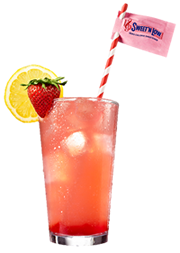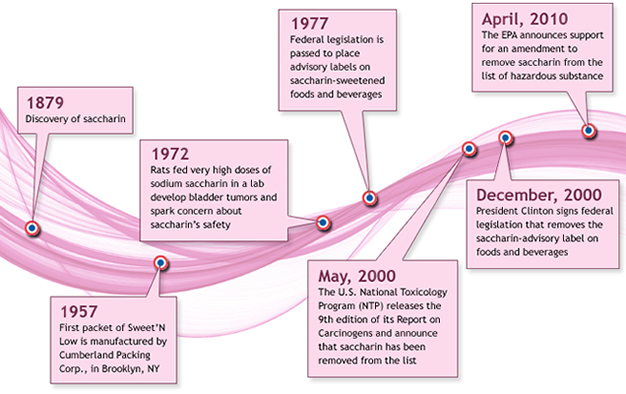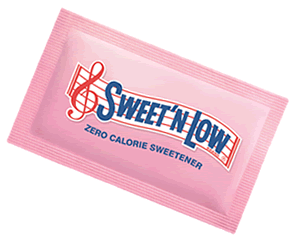

Sweet’N Low 101: What You Need to Know

Sweet'N Low®, America's favorite little pink packet, is enjoyed in more than 50 countries around the globe and is consumed daily by millions. It can be used in place of sugar to sweeten all of your favorite foods and drinks. Sweet'N Low has been used by health professionals for close to 60 years to help clients with diabetes and weight management.
World Health Organization World Health Organization Report
(see section 3.1.5 ‘Saccharin' on pages 17-19 of the report)
American Cancer Society
(look for saccharin)
What is Saccharin?
Saccharin, the sweetener used in Sweet'N Low®, has been consumed by humans for 100+ years. It is the oldest of the approved zero-calorie sweeteners available in the U.S. today. Discovered over a century ago, saccharin has been used to safely sweeten foods and beverages without the extra calories and carbohydrates from added sugars. Saccharin is supported by the health community as a tool to help patients manage weight and diabetes.

Quick Facts About Saccharin:
- Long history of safe use (over 100 years)
- 300 to 500 times sweeter than sugar
- Not metabolized by the body; non-caloric
- Creates no glycemic response; won’t raise blood sugar
- Non-cariogenic
- Oldest approved low-calorie sweetener
- One of the most thoroughly tested food ingredients in the world with a very long human use experience without any reported ill effects

History
Saccharin
Saccharin has been enjoyed safely for over a century by generations of Americans. During the 1970s, saccharin was the only approved low-calorie sweetener available in the U.S. It is used daily in homes across the country as a tabletop and baking sweetener and in commercial food production.
Saccharin is the main sweetener in Sweet’N Low®.
Sweet'N Low
Close to 60 years ago, Sweet'N Low® was a radical innovation. Now it's a familiar part of the American landscape. The first, single serving, granulated saccharin packet was produced in 1957. It is sold globally and helps millions manage their weight and diabetes when used in place of added sugars.
For more information on Sweet'N Low history click here.

Safety of Saccharin
Saccharin is one of the most thoroughly tested food ingredients in the world. Extensive research has affirmed the sweetener’s safety time and again. The evidence in support of saccharin’s safety includes more than 30 human studies, one of which was conducted by the National Cancer Institute and involved over 9,000 individuals. Yet, despite the overwhelming evidence in support of saccharin’s health benefits, confusion over its safety has persisted. The majority of confusion stems from controversial research done in the 1970s, in which male rats were fed very high doses of the sweetener and developed bladder tumors.
For more information on the safety of saccharin, please visit the Calorie Control Council.
Today, health experts overwhelmingly affirm the sweetener’s safe use in humans. In December 2000, President Clinton signed into law the “Sweetest Act” – federal legislation which gave saccharin a clean bill of health and removed the saccharin-advisory label that had been required on saccharin-sweetened foods and beverages in the U.S. since 1977. More recently, in April 2010, the Environmental Protection Agency announced support for an amendment to remove saccharin completely from the list of hazardous substances.


How is Sweet'N Low Made?
Sweet’N Low was first introduced in 1957 by Cumberland Packing Corp., a small, family-owned company based in Brooklyn, NY. It was the first single serving saccharin packet available in the United States. Today America’s favorite little pink packet, Sweet’N Low, is very much a piece of American history and is sold worldwide.
Because saccharin is 300 to 500 times sweeter than sugar, only a very small amount is needed to reach a similar sweetening intensity. In order to make that small serving portionable, the saccharin is blended with dextrose, a carbohydrate derived from corn, which acts as a “bulking agent.”
Sweet’N Low has a long shelf life (several years when stored in cool, dry conditions) and does not lose sweetness when heated, unlike some other low-calorie sweeteners. It is available as a tabletop sweetener, in granular and liquid form, and is sold in single-serving and bulk packages.









